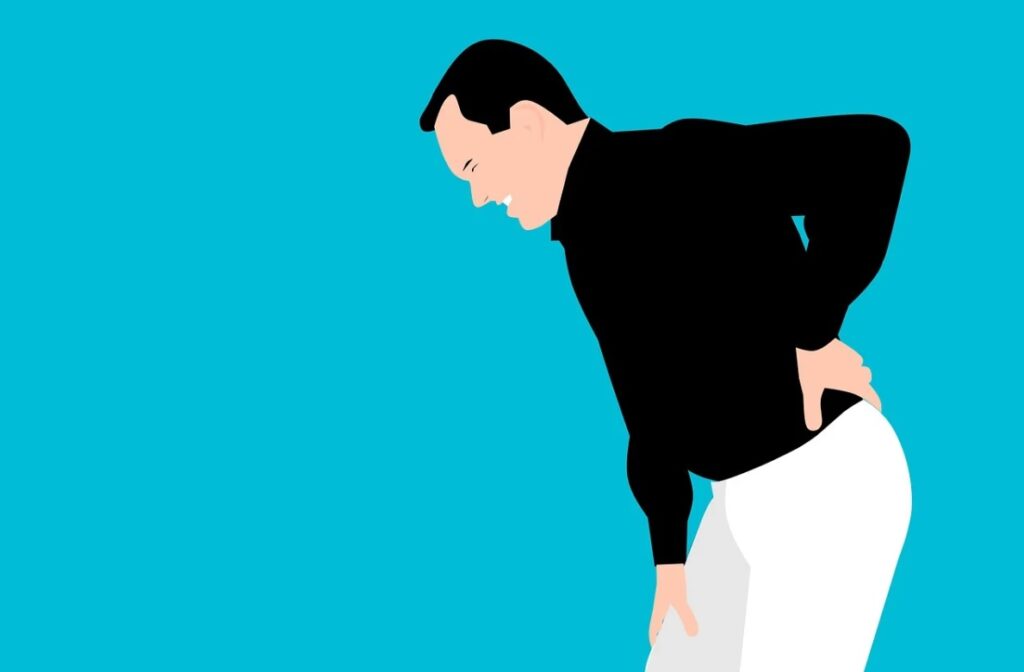Spine problems can arise from injury or health conditions. Spinal injuries happen when some nerves at the end of the spinal canal experience damage. While people of different ages can experience spinal problems, the chances of developing back injuries increase as you get older.
The spinal canal, a stack of bones, runs from the head to the lower back. These bones support the neck and help you stand upright. The cord also creates a passage for nerves that connect the brain to the rest of the body. Spine problems can hinder your daily activities, from work to exercise.
While some spinal problems require surgical treatment, doctors recommend non-surgical options like physiotherapy and bed rest for conditions like sprains and strains. To prevent developing back pain, try core-strengthening exercises like crunches and squats. Avoid lifting heavy objects and maintain the correct sitting and walking posture.
Is your back pain a result of underlying spinal injuries? Here are seven signs that you may have spine problems:
1. Muscle Spasms
Sometimes muscles twitch on their own, which can be harmless. Stressful situations like lack of sleep and dehydration can trigger muscle spasms across different parts of your body. However, back spasms could show symptoms of spine problems. Sometimes, back muscles also spasm to protect themselves from strain and injury. Recovery time for the minor spinal sprain can range from one to two weeks. Apply first aid methods like pain relief tablets, bed rest, and heat therapy for mild cases.
However, if the spasms continue after over two weeks, you could have some anatomical problems like spinal stenosis and osteoarthritis. This is where an ACDF Neurosurgeon Specialist could help. As they’re experts in treating a wide range of conditions, they have the necessary experience to carry out delicate surgeries with great precision and accuracy. Such specialist can develop a comprehensive treatment plan to alleviate your pain safely with minimal invasiveness, so don’t hesitate to discuss any questions or concerns you may have about the process during the consultation.
2. Pain While Sitting
Pain while sitting is another spine problems symptom that you need to be aware of. Like every other activity, sitting for extended periods can cause back pain and sore muscles. However, experiencing pain while sitting could point to spinal injuries. Across the stack of bones that make up the spine, a disk prevents them from scraping each other. However, when this disc slips out of place, you could experience severe back pain. The pain arises from intense pressure on the disk since it serves as a cushion for the vertebrae.
While exercises and medication could reverse the effects of a slipped disk, extended damage to the spine could require surgical treatment.
3. Weakness In The Legs
Sometimes, spinal nerve irritations trigger weakness in the leg and foot muscles. However, doctors must determine the type of weakness to diagnose the spinal problem in question.
For example, growths and tumours in the lower back could block the blood supply to the legs, causing weakness. Other conditions like spinal stenosis happen when the lower spine tunnel that transmits nerves to legs compresses. Doctors recommend surgical procedures to treat leg weakness in extreme conditions like tumours. Otherwise, anti-inflammatory medication and physical therapy are viable options.

4. Muscle Weakness
Most times, muscle weakness accompanies other symptoms, like muscle spasms and pain. Muscle weakness happens due to deteriorating muscle strength. Chronic stress causes the muscles to contract, limiting the supply of blood. This contraction weakens the muscles’ ability to support the back.
However, sudden loss of muscle strength could point to severe nerve injury. Lesions on the lower spine also trigger muscle weakness. Other congenital spinal conditions like Guillain-Barre and Myasthenia Gravis also weaken the muscles. Doctors treat this symptom through physical therapy and exercise.
5. Numb Sensations
Numbing sensations or tingling along the back happen for different reasons. For instance, when one bone in the vertebrae slips out of place, the resulting symptom could cause tingling sensations on the lower back. Here, maintaining the correct sitting and walking posture could reverse the problem.
Injuries and traumatic falls could cause a spinal fracture. Doctors recommend different treatments based on the severity of the case. From back braces to surgery and rehabilitation exercises, there are various treatment options.
6. Back Pain with Bladder Issues
Back pain and bladder weakness aren’t good signs. Sometimes, drawn-out muscle weakness can lead to bladder issues. The nerves at the lower back help coordinate activities like walking, sitting and running. However, damage to these nerves causes pain and weakens the muscles around the leg and genital organs. Patients with this condition cannot experience the urge to urinate.
Health conditions like HIV, cancer, diabetes mellitus, and malnutrition increase the risk of exposure to infections. Many of these spinal infections cause back pain with bladder issues. Neurosurgeons perform surgery to restore bladder function, followed by drug therapy and exercises.
7. Nausea and Vomiting
Maybe you had some food that made you feel sick. However, experiencing nausea points to the possibility of having spinal problems. Vomiting signifies internal stress. Sometimes, strained muscles accompanied by back pain could cause continuous vomiting.
Some stress headaches that affect the head and neck also trigger nausea and vomiting. Although many spinal problems cause these symptoms, doctors have to conduct a thorough examination to determine the correct diagnosis.
